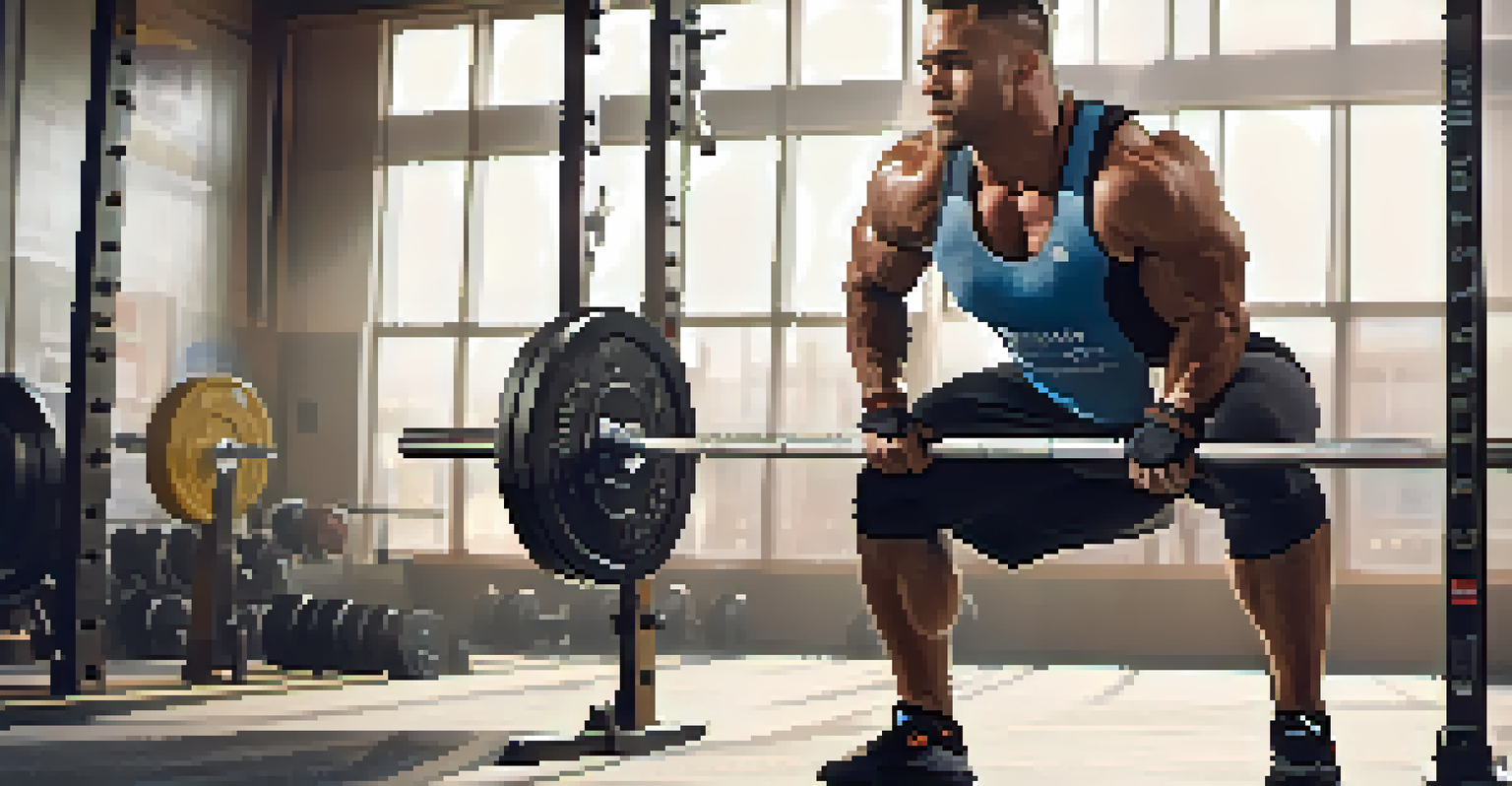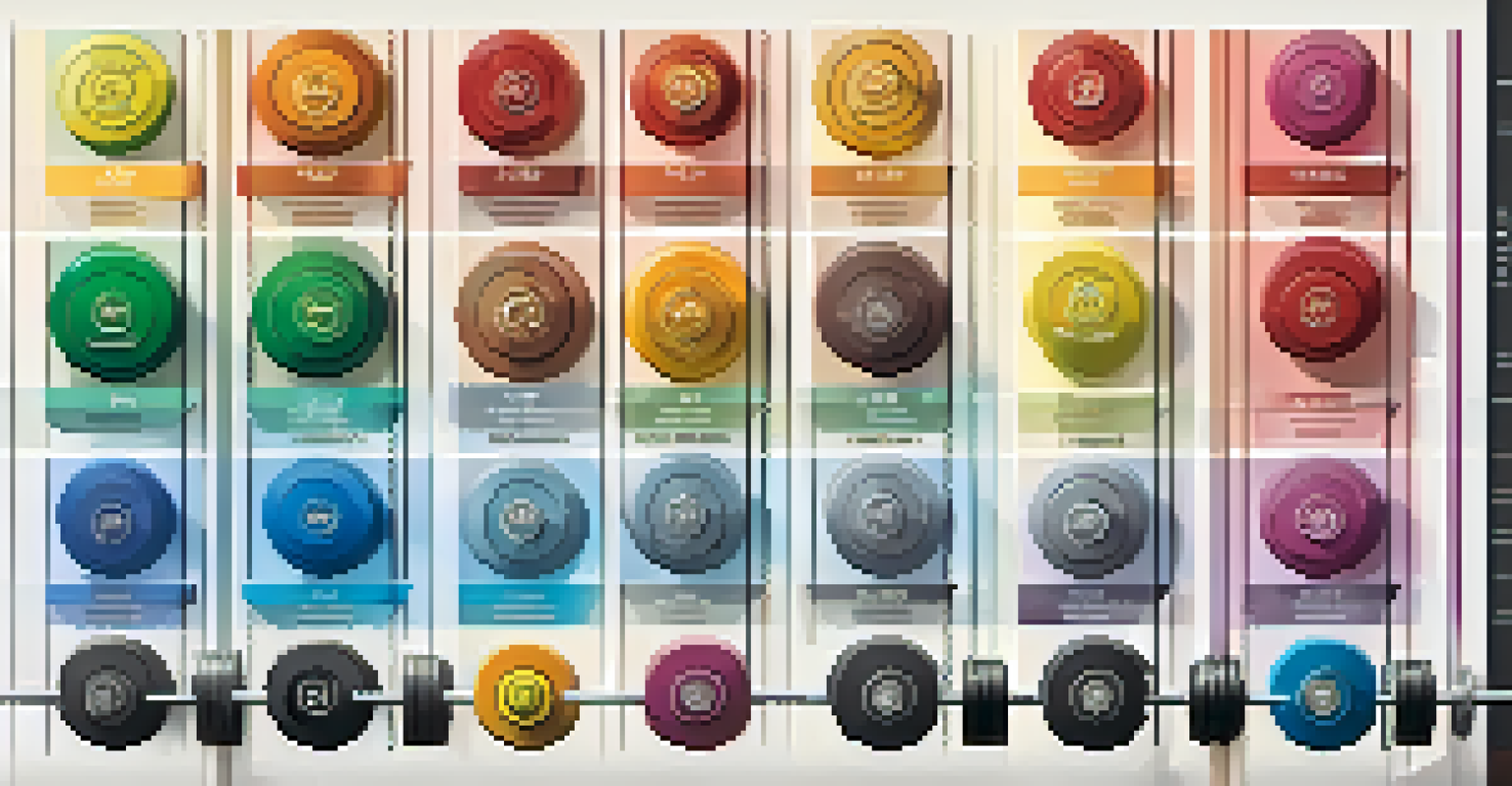Understanding Powerlifting Weight Classes and Categories

Introduction to Powerlifting Weight Classes Explained
Powerlifting is a sport that focuses on three main lifts: the squat, bench press, and deadlift. To ensure fair competition, athletes are divided into weight classes, which help level the playing field. Understanding these weight classes is crucial for both competitors and fans alike, as they influence training strategies and competition outcomes.
Strength doesn’t come from what you can do. It comes from overcoming the things you once thought you couldn’t.
Each weight class has a specific range that athletes must meet in order to compete. This means that heavier lifters don’t have an unfair advantage over lighter ones. By categorizing lifters based on weight, the sport promotes inclusivity and encourages participation from individuals of all shapes and sizes.
In this article, we’ll dive deeper into the various weight classes and categories in powerlifting, exploring how they are structured and what they mean for lifters. Whether you’re a seasoned competitor or a curious newcomer, understanding these classifications will enhance your appreciation of the sport.
Overview of Powerlifting Categories: Raw vs. Equipped
Powerlifting competitions generally fall into two main categories: raw and equipped lifting. Raw lifting refers to performing the lifts without any supportive gear, except for a belt and knee sleeves. This category emphasizes an athlete's natural strength and technique, making it popular among many lifters.

On the other hand, equipped lifting allows the use of specialized equipment, such as squat suits and bench shirts, which provide additional support. While this can help lifters lift heavier weights, it also requires a different skill set and technique. Understanding these categories is essential as they can influence how athletes choose to train and compete.
Understanding Weight Classes
Weight classes in powerlifting promote fair competition and inclusivity among athletes of all sizes.
Ultimately, whether you choose raw or equipped lifting, both categories present unique challenges and benefits. Each athlete must decide which path aligns best with their goals and preferences, creating a diverse and dynamic landscape within the sport.
The Importance of Weight Classes in Powerlifting
Weight classes play a significant role in powerlifting by ensuring fair competition among athletes. Without these classifications, heavier lifters would dominate the sport, making it difficult for lighter competitors to succeed. This structure encourages more lifters to participate, fostering a sense of community and camaraderie.
The only limit to our realization of tomorrow will be our doubts of today.
Additionally, weight classes can influence an athlete's training regimen. Lifters may choose to either maintain their weight within a specific class or aim to move up or down a class, which can affect their overall strength and performance. This strategic planning is a crucial part of competitive powerlifting and adds another layer of complexity to the sport.
In essence, the existence of weight classes not only promotes fairness but also enhances the competitive spirit among lifters. It encourages athletes to push their limits and strive for personal bests, regardless of their body weight.
Breaking Down Powerlifting Weight Class Ranges
Powerlifting weight classes vary by organization, but most adhere to a similar structure. For example, in the International Powerlifting Federation (IPF), the weight classes for men range from 59 kg (130 lbs) to over 120 kg (264 lbs), while women's classes range from 47 kg (104 lbs) to over 84 kg (185 lbs). Each of these classes has specific weight limits that must be met to compete.
Understanding these weight ranges is essential for competitors as they prepare for events. Athletes often adjust their diets and training programs to gain or lose weight strategically in order to fall within their desired class. This process, known as ‘weight cutting’ or ‘weight gaining,’ can be challenging and requires careful planning.
Raw vs. Equipped Lifting
Powerlifting is divided into raw and equipped categories, each requiring different skills and influencing training approaches.
By knowing the exact weight categories, lifters can set realistic goals and develop training strategies tailored to their specific class. This tailored approach is key to achieving competitive success and personal growth in the sport.
How to Choose the Right Weight Class for You
Choosing the right weight class is a crucial step for any powerlifter. It involves considering your current weight, strength level, and long-term goals. For many, the decision may come down to whether they want to compete as a lighter lifter or push the limits of their strength in a heavier class.
It's important to evaluate how your body responds to different weights and training regimens. Some athletes find that they perform better at a specific weight class, while others may benefit from the added strength of a heavier class. Testing out different classes during training can provide valuable insights into where you might excel.
Ultimately, the right weight class for you should align with your personal goals and lifestyle. By prioritizing your well-being and enjoyment of the sport, you can make informed decisions that lead to a fulfilling powerlifting journey.
The Role of Weight Classes in Competition Strategy
Weight classes not only influence how lifters prepare but also play a crucial role in competition strategy. Lifters often study their competitors within their weight class to gauge their own strengths and weaknesses. This analysis can help them plan their attempts and make informed decisions during the event.
For instance, a lifter may decide to attempt a heavier lift if they know their closest competitor is struggling with a particular lift. Alternatively, they might play it safe and secure a lighter lift to ensure they place higher. This strategic thinking adds an exciting layer to the competition and showcases the mental aspect of powerlifting.
Strategic Weight Class Selection
Choosing the right weight class is essential for lifters, impacting their training, performance, and competition strategy.
Thus, understanding weight classes is essential not only for training but also for executing a successful competition strategy. Lifters who can navigate these dynamics often find themselves performing better under pressure.
Final Thoughts on Powerlifting Weight Classes
Powerlifting weight classes and categories are fundamental to the sport, promoting fairness and inclusivity among athletes. By understanding these classifications, lifters can make informed decisions about their training and competition strategies. This knowledge empowers athletes to achieve their goals while appreciating the diverse nature of powerlifting.
Whether you’re a seasoned competitor or just starting out, grasping the nuances of weight classes can enhance your experience in the sport. It allows you to connect with fellow lifters and understand the challenges they face, fostering a sense of community.

As you embark on your powerlifting journey, remember that your weight class is just one aspect of your overall performance. Focus on your personal growth and enjoy the process, and success will follow in due course.